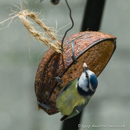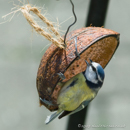From The Neolithic To The Sea: A Journey From The Past To The Present
Birds
Statistics
Category
County
Coordinates
Grid
Condition
Age
Admission
County
Coordinates
Grid
Condition
Age
Admission
Miscellaneous
-
-
-
-
-
-
-
-
-
-
-
-
- History
- Gallery
- Gallery
- Gallery
- Gallery
- Gallery
- Gallery
- Gallery
- Gallery
- Gallery
- Gallery
- Gallery
- Gallery
- Gallery
- Gallery
- Gallery
Birds are a group of warm-blooded vertebrates constituting the class Aves, characterized by feathers, toothless beaked jaws, hard egg laying with a high metabolic rate and a four-chambered heart including a strong yet lightweight skeleton. Birds live worldwide and range in size from the 5 cm bee hummingbird to the 2.75 m ostrich.
There are approximately ten thousand living species, more than half of which are perching birds. Birds have wings whose development varies according to species with the only known groups without wings are the extinct moa and elephant birds.
Wings, which evolved from forelimbs, gave birds the ability to fly, although further evolution has led to the loss of flight in some birds, including ratites, penguins, and diverse endemic island species. The digestive and respiratory systems of birds are also uniquely adapted for flight. Some bird species of aquatic environments, particularly seabirds and some waterbirds, have further evolved for swimming.
Birds are a group of feathered theropod dinosaurs and are considered reptiles in the modern cladistic sense of the term with their closest living relatives are the crocodilians. Birds are descendants of the primitive avialans which first appeared about 160 million years ago in China. According to DNA evidence, modern birds known as Neornithe, evolved in the Middle to Late Cretaceous and diversified dramatically around the time of the Cretaceous–Paleogene extinction event which killed off the pterosaurs and all non-avian dinosaurs.
Many species of birds are economically important as food for human consumption and raw material in manufacturing, with domesticated and undomesticated birds being important sources of eggs, meat, and feathers. Songbirds, parrots, and other species are popular as pets. Guano is harvested for use as a fertiliser.
About 120 to 130 species have become extinct due to human activity since the 17th century, and hundreds more before then. Human activity threatens about 1,200 bird species with extinction, though efforts are underway to protect them. Recreational bird watching is an important part of the ecotourism industry.
There are approximately ten thousand living species, more than half of which are perching birds. Birds have wings whose development varies according to species with the only known groups without wings are the extinct moa and elephant birds.
Wings, which evolved from forelimbs, gave birds the ability to fly, although further evolution has led to the loss of flight in some birds, including ratites, penguins, and diverse endemic island species. The digestive and respiratory systems of birds are also uniquely adapted for flight. Some bird species of aquatic environments, particularly seabirds and some waterbirds, have further evolved for swimming.
Birds are a group of feathered theropod dinosaurs and are considered reptiles in the modern cladistic sense of the term with their closest living relatives are the crocodilians. Birds are descendants of the primitive avialans which first appeared about 160 million years ago in China. According to DNA evidence, modern birds known as Neornithe, evolved in the Middle to Late Cretaceous and diversified dramatically around the time of the Cretaceous–Paleogene extinction event which killed off the pterosaurs and all non-avian dinosaurs.
Many species of birds are economically important as food for human consumption and raw material in manufacturing, with domesticated and undomesticated birds being important sources of eggs, meat, and feathers. Songbirds, parrots, and other species are popular as pets. Guano is harvested for use as a fertiliser.
About 120 to 130 species have become extinct due to human activity since the 17th century, and hundreds more before then. Human activity threatens about 1,200 bird species with extinction, though efforts are underway to protect them. Recreational bird watching is an important part of the ecotourism industry.































































































































































































































































































